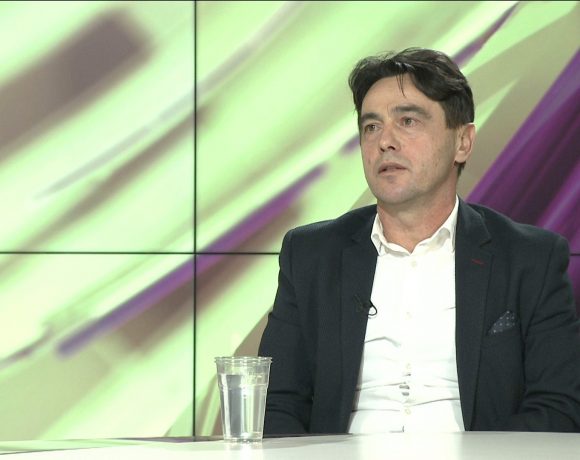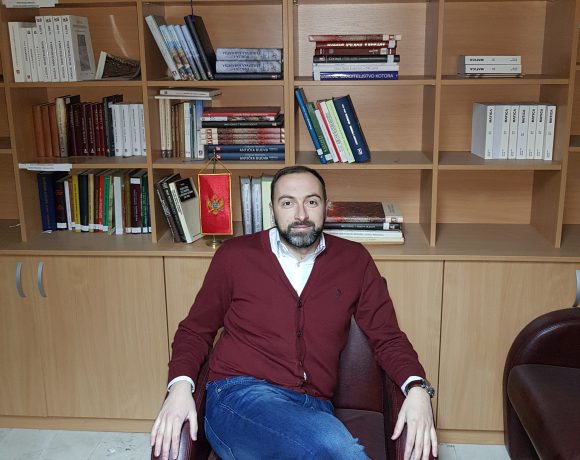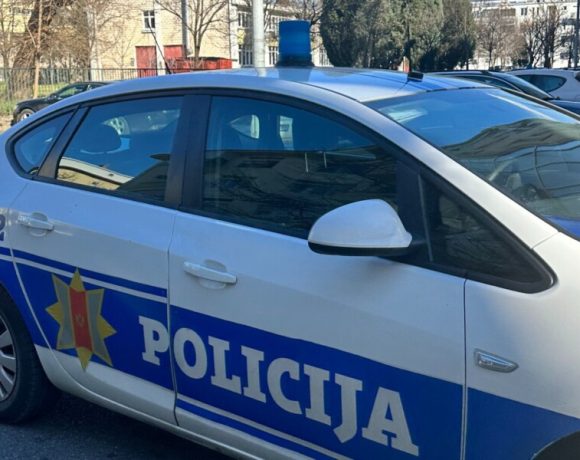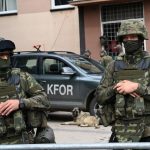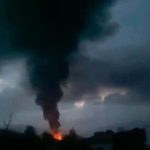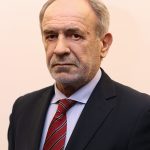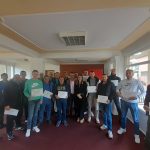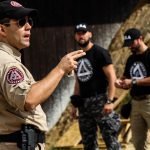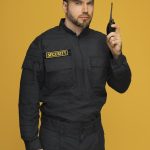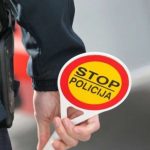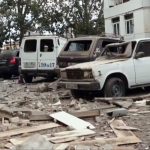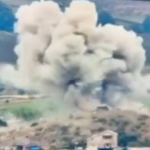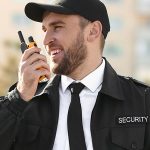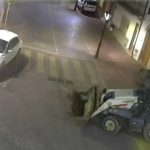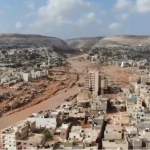David L. Johnson: Establishing a Successful Executive & Dignitary Protection Program

Mr. Johnson is currently, semi-retired. In thirty-seven years of direct experience, his military career culminated in serving Chief, Investigative Support for the US Army’s Protective Services Unit providing global support to the most senior civilian and military leadership in the US Departments of Defense and Army. He has coordinated Presidential, Cabinet, Ambassadorial, and Senior Executive level protective programs in threat environments ranging from negligible to that of imminent assassination attempts by state sponsored terrorist organizations, conditions of Coup D’tat and ultra-nationalism. He has conducted multiple high threat or politically sensitive assignments in Somalia, Haiti, and Bosnia-Herzegovina and contract management in Afghanistan and Iraq.
Mr. Johnson is the author of Advance – The Guide for Conducting a Protective Security Advance and numerous protective services and training articles in various publications including Chief Security Officer, Leadership Excellence, Security Management On-line, American School and University and District Administration Magazines, and is a past regular columnist for Inside Homeland Security Magazine.
Mr. Johnson has been the recipient of many awards and honors for his efforts in dignitary protection including the Department of Defense Meritorious Service Medal, five US Army Meritorious Service Medals, and official US State Department recognition.
Mr. Johnson currently serves as Chairman, Board of Supervisors and as Emergency Management Coordinator for Pine Township in Clearfield County, Pennsylvania.
- How did you become involved in establishing the US Army’s first Executive & Dignitary Protection program?
In 1980 while serving as a Military Policeman in the 66th Military Police Company, 95th Military Police Battalion, in Karlsruhe, West Germany. Our Battalion Commander was running a variety of training courses pertaining to combat support for the Military Police during that time frame. At some point in time, he had a conversation with his British NATO counterpart who expressed interest in sending some British Military Police to these combat support courses. In turn, as I understand it, that British officer sought and obtained permission from their Ministry of Defense to allow an American Soldier to attend their Royal Military Police Close Protection Training Course, with the provision that the American Soldier could pass the qualification course. No American had ever attended that course before. Another soldier and I were hand selected by our Battalion Commander to go to the three day long qualification course. In that course there were 30 British Soldiers and the two of us American Soldiers. It was a demanding program that took an in-depth look at several aspects or our abilities and our character. At the end, only four soldiers passed that course, two British and 2 Americans. I later had the privilege of attending the course and I returned to Karlsuhe. A third American was subsequently allowed to attend the course and the three of us were tasked to create and provide training to our battalion’s soldiers on protective services and how they should support protective operations. While we were running one of these courses, the Red Army Faction, a now defunct terrorist organization that had some significant capabilities, attempted to assassinate General Frederick Kroesen, the US Commander in Chief of all of the US Army units stationed in Europe, in Heidelberg West Germany on September 15, 1981. General Krosen, his wife and the other two people in the vehicle that was hit with an RPG 7 grenade, luckily survived the attack. Subsequent to that attack, a decision was made to establish a Personal Security Detachment at the Headquarters United States – Europe (USAEUR). The three of us Royal Military Police Close Protection Course graduates were asked if we would volunteer to establish, equip and train this unit as there was no training for this available anywhere in our military at the time. I volunteered but the other two did not for reasons of their own.
The unit was established and by October of that year I had the privilege of being its founding Non-Commissioned Officer in Charge. Fifteen Military Police soldiers were selected and began escorting three General Officers who were designated to receive this support. During this time frame, we had the challenge of both conducting daily operations and attempting to train these soldiers on the advanced techniques I had learned from our NATO counterparts. As one might imagine, it took some time to instill the skill base but we achieved our goals. This was confirmed when our team detected members of the Red Army Faction conducting surveillance on one of our protectees the following October. Our team then employed the counter surveillance techniques they had been taught and traced these surveillance operators back to an apartment complex in Heidelberg. The German police executed a search on this apartment and confirmed that it had been used as a Red Army Faction safe house. During this timeframe, the Red Army Faction had exploded a car bomb at the US Airforce Europe’s base in Ramstien, West Germany and the Red Brigades had kidnapped US Army Brigadier General James L. Dozier in Italy. The November 17 organization was attacking US facilities and personnel in Greece as well. It was clear that the US Military was to be targeted by European based terrorist organizations.
Knowing that it had taken a long time to train my soldiers in the skills I had learned, and that there was sure to be a higher demand for this skill in the near future, I wrote a suggested training program of instruction. Working with the Chief of Staff USAEUR, I submitted a formal suggestion that the US Army establish a formal training course along the lines of what we had learned both from our NATO allies and in the field with our own experience and that fit our laws and regulations. I suggested that the training either be conducted in Germany or back at the United States Army Military Police School (USAMPS), then at Fort McClellan in Alabama. At the end of my tour in Germany I was supposed to be transferred to an armored unit in the US but my orders where changed through General Officer Back Channel Communications, a system that let our General Officers talk directly to others on a global basis. I was sent to USAMPS while my suggestion was being considered by the Army’s Training and Doctrine Command. It was approved shortly thereafter.
Another bit of synergy happened about this same time. General David Stem, who was the Provost Marshal in Europe who asked if we would volunteer to support the development of the Personal Security Detachment and approved my assignment, was transferred to USAMPS as well and became the Commandant of the MP School. His vision expanded the effort and he placed all military police training that could be considered anti or counter terrorism related and put them under one entity. I immediately wrote the first formal training course that provided 32 hours of training as this effort began to mature. I got to work on a longer formal course that led to the establish of a training program and a regulatory requirement for anyone assigned to full time protection duties to be a graduate of this program prior to assuming those duties.
In sum total, I spent 14 of my 20 years service involved with protection and training others to do the job.
- What was the greatest challenge you faced in establishing the Executive & Dignitary Protection program for the US Army?
It was new. Though there have been soldiers protecting generals and other leaders since the beginning of time, there were no existing regulations, guidance, tables of equipment that allowed us to get the equipment we needed, no way to get specific training equipment that is needed and no authorization to some of the things we needed to do. Most of our senior officers were unfamiliar with this support and some resisted its implementation. The greatest problem was demonstrating the benefits and capability, something I had limited ability to do by myself when I first started at USAEUR. So I had to start slow. I could easily demonstrate individual skills but you need a trained team to demonstrate collective skills. I could demonstrate single car maneuvers, for example, but I could not demonstrate motorcade anti-ambush drills until other drivers were trained and demonstrated proficiency in this collective skill.
I began by talking to some of the senior officers in the headquarters whenever I got the opportunity. I had one very senior Colonel ask me directly why General Kroesen needed us. He pointed out that General Kroesen had US Army divisions, attack helicopters and tanks under his command, this Colonel wanted to know what I could do that they could not. I told him that because the next time he gets ambushed in Heidelberg, all of those assets will be sitting nice and cozy at their base unable to respond immediately, just like that last time. The next time though, my soldiers and I would be armed, trained and immediately responding to the ambush with counter ambush drills that had been proven. That was talk soldiers could understand and I got a few doors open.
While running a weapons range in the very early days, my unit did not have the benefit of having a standard weapons package, it was kind of a mix of bring whatever you can and some weapons that were obtained from the US Army Crime lab in Frankfurt, including a couple UZI submachine guns. At that time, though I could get the guns, I could not get 9mm ammunition. I was really lucky because one of my British classmates from the close protection course was assigned to a unit established for a British Army General Officer that worked on the same base we were on. He couldn’t get training areas, but I could. He could get 9mm rounds all day long. So we worked together. He got me ammunition, I got him training areas and we served as each other’s opposition forces during training we gave.
The first time I had opportunity to run a range for my unit, it was winter. My soldiers were wearing gloves and I had been ordered by my direct supervisor to not do anything other than a basic US Army weapons qualification course. I was not allowed to teach any of the advanced techniques I had learned. To my good fortune, another Colonel who was Chief of Staff for one of our protectees, stopped by to observe. What he observed was that some on the firing line were having weapons malfunctions because their gloves were getting bound up between the cylinder and the pistol frame and stopping the cylinder rotation. I let that happen without saying a word.
That Colonel picked up on that though and began giving me an earful, reminding me that it was my job to fix that training issue, it very certain terms. I took it and when he asked me what I had to say for myself, I asked that he give me a few minutes to show both him and my soldiers what I want to train them on. He accepted. Fortunately my British classmate was there as well and we teamed up to go through some of the hand gun techniques we had learned together. They are quite impressive. Then I asked the Colonel to come forward, got an Uzi submachine gun and demonstrated how to use it with the instinctive alignment technique. Don’t take the time to get sight alignment but hit what you intend to very quickly. I then taught him how to do it and in a matter of minutes he was effectively engaging multiple targets. My soldiers were now excited to learn as well. When I got back to the headquarters I had to go up to that protectee’s office to coordinate movements for the next day. I saw that Colonel in the hallway telling the entire office staff what he had learned and actually demonstrating the instinctive alignment technique using an air Uzi and making machine gun noises. I knew right then I had won that battle. My immediate boss washed his hands of this and told me I would accept full responsibility for anyone who got hurt. I accepted that responsibility and the team enhanced their weapons skill greatly.
When setting up the new training that had been approved, we had to do that all over again, but General Stem was leading the way and helped solve lots of problems for us. The best example was that in teaching vehicle counter ambush drills you should teach vehicle ramming. I’m not giving any secrets away here, it’s been around a long time and both sides use it. But to teach it you need to have some cars that you can bend on purpose. There wasn’t any funds or sources we could access for them. So General Stem found a way. When cars get old in the Army, they reach a point where they are not economically repairable, so they get turned into a place where they can get sold as scrap and get new cars. General Stem, understanding the value of the technique (which had never been taught in the US Army before) and the need for training vehicles you could destroy, reasoned why not get vehicles the Army doesn’t want anymore and simply destroy them a bit further.
So we started shipping old vehicles from all over the US to our training sight. We got a mechanic assigned to us. He made a few of them run, but he didn’t have authorized tool kits nor any way to get spare parts. He’d make one operable, and we’d use it for training and the thing would break down because a short piece of heater hose would burst and the vehicle would over heat… No authority, no funds for tools and spare parts but the need to do the training is real. What to do? Well one day shortly thereafter, I realized that we had a coke machine in our building that our students bought cokes and other soft drinks from every day. Those soft drinks come in aluminum cans and people would pay you for them when you recycled them! So I took a picture of a car that had been shot up pretty good during one of our firepower demonstrations to help people understand a bullet will go through both sides of a sedan like a hot knife through butter. This helped them understand what part of a car is cover and what parts are not. I put the picture depicted at right on the coke machine. That picture of me looking stupid and pointing at all the bullet holes was put there on purpose. I thought I’d get in trouble and have my chance to convince someone up the chain of command that we needed to get this fixed. But darn it, my recycling aluminum cans plan worked we made a lot of money that way, as other branches in the school house chipped in with their used cans and we bought our mechanic the tools he needed and lots of heater hose and other spare parts to keep those old cars running.
So I guess I would say overcoming obstacles, one way or the other, was the biggest challenge but over time, it got way easier as each time you overcome an obstacle, it is no longer in your way.
- The US Army established its Executive & Dignitary Protection program 1981, in response to a terrorist attack on the Commander of US Army forces in Europe. How have Executive & Dignitary Protection programs changed or evolved over the last several decades to deal with the current terrorist threat?
That’s a great question! In 1981, we did not have fancy high speed stunt driver type vehicle turns to use in our counter ambush drills, they did come shortly after and we incorporated them in our full course somewhere along 1983/84 timeframe. They sure are useful and much quicker than the old three point turn I learned in the RMPCP course. But time, technology and terrorist techniques have changed over time. Not to mention the amount of combat time that has happened between then and now. Here’s some examples:
- The spiffy vehicle turns were really good for quite a while, but then two things got in the way, one due to tactical requirements and the other due to technology. In the wars in Iraq and Afghanistan, a lot of civilian contractors got employed and they started making their vehicles harder by welding steel along the inside to protect them. Others could afford armored vehicles and sometimes that would be a big F350 Fort Pickup trucks and they would fabricate more armor in the bed of the truck and put machine guns or fighting positions in them. That changes the center of gravity to a higher point and a lot of people who didn’t really understand the change in the vehicle dynamics would cause them to roll over when you tried those high speed turns. Technology here in the US is creating problems with computer aided driving, braking, anti-skid support, anti-roll and limits on how fast you back up can all impact your ability, so in both cases you’re really back to the old three point turn sometimes. It is more important now than ever to understand your vehicle’s capabilities and apply the right methodology. These days I hear people saying you shouldn’t use the high speed turns anymore at all but I think it is foolish to throw away one of the tools in your tool box.
- We also used to teach folks how to drive from the right front seat, simply put your foot over the hump in the floor so you can access the gas and brake pedals and grab the steering well. Takes a little practice but there is nothing you can do from the driver’s seat that you cannot do from the passenger seat. Well some vehicle designs don’t allow that anymore, with big storage boxes in the middle of the two front seats. The old Jeep you could do that in, but not the HUMMV, especially with the radio system installed. You simply cannot get there easily. So you may have to modify how you will keep that vehicle moving out of a kill zone if your driver gets shot and a lot of that will completely depend on that vehicle’s configuration.
- Communication has improved greatly. There was no cell phones when I started, no GPS, you had to know how to read a map and carry a lot of change around to use public telephones. I still recommend map reading because your electronics can fail from time to time.
- Terrorist Tactics, Techniques and Procedures used to be pretty much a global thing. What they used in Germany, was used often in Italy. Not today. Today, they seem to me more regional. What you see in Mexico is not always what you might see in Afghanistan. With the advent of the internet, training for the opposition is easy to find and TTPs are out there for the sharing. New ideas and TTPs pop up all the time and we have to try our best to stay abreast of them. The advent of and the popularity of Suicide bombers has created what is most likely the scariest methodology currently out there. However, the use of drones will likely be developed more and more overtime and will likely require new technology to deter, detect and defend against them and will be needed shortly.
- What are similarities and differences between establishing and managing Executive & Dignitary Protection programs for government and private clients?
Both have a myriad of issues that need to be navigated. In the civilian sector there is a lot of the same hurdles I spoke to before, obstacles to overcome and the need to educate the client to a level of understanding. Always remember that you cannot impose security measures on a private sector client, the client must accept what you are doing or you’ll be looking for a new job as the client pays your salary. That will often involving finding creative ways to educate them. Budget is always a problem in the private sector, often with even the wealthiest clients. We are expensive, the extra vehicle(s), equipment and costs associated with living, travel and lodging add up quickly and there is no economic return. We are a cost center, not a profit center, so things can be looked at from that perspective and even those who are not protected can raise issues on those grounds. A Chief Financial Officer (CFO) for the Chief Executive Officer (CEO) of a corporation providing protection for that CEO can cause budget reductions that don’t pass the common sense test from the security perspective. Authority is also a similar problem, here in the US each state regulates private sector security and the laws for obtaining the appropriate license to do our job legally vary. In addition, no state recognizes another state’s license for you to operate with in their state. In the District of Columbia private bodyguards and prohibited by law and it is illegal to hire an off duty DC Metropolitan Police Officer. The problem gets more complicated if you are working carrying a side arm. So if your client lives in Colorado, wants to attend a meeting in DC, have crab cakes in Maryland and sleep over night in a Virginia hotel, your Colorado security license does not allow you to legally do your job in any of the other jurisdictions. The same problem occurs when you attempt to travel internationally. You must do your research and navigate those obstacles accordingly before your client embarks on that trip.
In the government sector, it is a bit easier these days as many of the rules and regulations have now been written. You still have to get your client’s cooperation and acceptance of what you want to do but when the government says he or she will have personal security, they don’t have as much choice and tend to cooperate better. If you are good at your advance work, you’ll get your buy in from them as you’ll be facilitating all their activities and that is something they will come to value. Working for the government is easier in both interstate and international travel. You still have to abide by some laws but your authority is typically established in existing law today and your right to carry arms is much more widely accepted. Don’t think you’ll always get what you want and change is much slower in this sector than in private sector so new technology and TTPs requiring new solutions often arise where the new solution is slow to come, where in the private sector once your boss says, OK you can implement things immediately.
- You have planned and conducted Executive & Dignitary Protection missions all over the world, including the Balkans. Were there any differences in your approach to protective services in the Balkans compared to other parts of the world?
Another great question. Yes, but not really because of being in the Balkans but because of the different level of authority I had, the differences in culture and the resources that were available for me to utilize. Let me illustrate some:
While performing protective services with the US Army, I was fully covered in carrying weapons, including fully automatic weapon platforms such as the M4, THE H&K MP5 series, the UZI, whatever. I could travel internationally with them as long as I followed the rules of the Department of Defense and the Status of Forces Agreement in place with whatever country I was visiting. One of my assignments was to be an advance agent for a trip General Colin Powel took to go to Somalia when our nation got involved there during Operation Restore Hope. During this trip he wanted a tour of the Green Line in Mogadishu that was the dividing line in the city between two warring clans. While they were not actively fighting at that time, it was defined territory occupied by opposing armed combatants. So not only did my team have its own personal weapons, we got additional resources assigned to support us that included armored vehicles with .50 Caliber machine guns and Mark 19 40mm Grenade launchers to tag along, fully loaded Corbra attack helicopters over flew our motorcade and scouted the route ahead of us. We even had the USS Wasp, an aircraft carrier, off shore for him to sleep in. That is a lot of firepower to mess with and provided quite a deterrent. There were times we got Light Armored Amphibious vehicles full of US Marines to set up road blocks and provide security cordons for us because there was no way to search vehicles effectively when everyone had an AK47 or two. You cannot do this the say way in the private sector.
After retiring, I went to work as a contractor for the US State Department’s Bureau of Diplomatic Security. President Clinton of the US had just intervened in Haiti and returned President Jean Bertrand Aristide to Haiti after he signed the Governor’s Island Accords. I subsequently became the Detail Leader for a Presidential level security team in that country for that president. Though a civilian employee, my weapons were provided under contract by the State Department and transported by them to that country. The agreement between our two nations included the authority to use force and deadly force, provided immunity for use of deadly force unless our actions were such that they would shock the conscious. As a member of the Presidential Security Team authorized by the Haitian Government, I could go anywhere and do anything I needed. In this capacity I could form security cordons of security, even when walking down the street with the President when he was out in public. No one came within our formation without either prior approval or without the President’s direction. Those we did not know who came in got searched even if he invited them. Initially, since the US had invaded the island, I had US military support with soldiers on my perimeter 24/7 and use of my beloved Corbra helicopters.
My second US State Department assignment was to provide personal security for US Ambassador Robert Frowick, Head of Mission for the OSCE in Sarajevo. Different world, different culture than in Haiti. In Haiti, we had the authority to create secure cordons even in walking formations. When I looked at that issue upon arriving in Sarajevo, I saw that I did not have that authority and would likely draw attention and create arguments, maybe even fights in the streets of Sarajevo if I tried that. So we changed approached and let the public walk right through our formations, while keeping a very close eye on them as they approached and passed us by. No fights or confrontations ever ensued in the 17 months we did that for. In Haiti the culture there does not have the need for personal space that other cultures have. If you get to close to me I get uncomfortable as that is part of my culture. In Haiti, often it is the closer the better. Believe it or not, many citizens actually believed that God had intervened in Haiti affairs and sent President Aristide back to them. Everyone wanted to touch him, everyone wanted to tell them their stories and this led to massive crowds surrounding our motorcades as we’d leave his residence, the National Palace or some public speaking event. In order to deal with that, our agents would have to dismount, run alongside the cars, often literally peeling someone off of the Presidential Limousine’s roof or hood, and keep that up until we could outpace the crowd, cut them off with barriers we placed in the road or simply got to where we were going.
During dismounted operations, these crowds would swarm us. Agents suffer information overload when that happens and you couldn’t see anyone draw a gun if your life depended on it. So we used the basic concepts of cordons of security to buy us some space, improve our ability to see potential threats develop and to enable a response from the inner cordon formation. We established what we termed the Onion Formation, which involved creating an outer cordon consisting of agents with their hands or arms interlocked to move along with us.
Dealing with the press in Haiti, we often dealt with crowds of reporters and photographers all trying to get closer to get a photograph or get their question answered, often ending in a bit of a shoving match.
In the Balkans nations that we frequented we never had either of those problems to deal with from the security perspective.
So the differences in authority, culture and resource availability were prime but the solution to finding the right approach, or what seems to be the right approach must always be evaluated in light of the threat assessment and weighed against those risks and threats that you identify.
- You have protected Presidents, Ambassadors, Generals, and Chief Executive Officers from many different countries. In your experience, who was the most difficult type of individual to protect and why? How did you overcome the challenges of protecting such individuals?
To me, it doesn’t really matter what category a principal falls into, it is more about the individual’s personality, their character and the actual threat environment. I gravitated to the high risk environment on purpose, and even there the individual personality makes impact. The most challenging protectee is the one that needs protection from their own behavior. That is someone I really do not want to work for. Quite a while ago, I was working for a company that had a client that hired the company to protect their adult child. Wasn’t much indication of a threat actually existing against that individual. As the first few days went by the agents on the job reported that this protectee was telling them that he had to run an errand but needed them to stay with his band equipment to protect that while he was out. Then he came back stoned to the gills. The obvious analysis is that he didn’t want witnesses to his purchase of illegal substances. So a conversation with the client was held in which they were informed that what they had really hired were people who had law enforcement backgrounds, who could be very professional witnesses and new how to spell the kid’s name. Turns out the real reason we were hired was that this kid had a restraining order issued on him mandating that he stay away from a previous girlfriend.
The next most unfavorable client is the one that wants to play games with the protection team. Politicians and entertainers who have public events, get loaded into the vehicles for a smooth departure then jump out the vehicles to rush back into the crowd by themselves after the command of load up is given to the team. Stupid and dangerous in many environments. Sometimes, they’ll want to leave the hotel room they are staying in to sneak out and play without the team knowing. When you accept the responsibility for someone else’s safety, that’s a problem. It is also a legal liability if they get hurt while they are supposed to be under your protective umbrella.
Status symbol bodyguards are hired by different categories of people. There’s no real definable, credible threat but their friends all have bodyguards so they want some too. I don’t want to play with them either.
All of these types of protectees have something in common, they do not want to listen to the people who should be their trusted advisor on personal security measures and / or they treat their security team like inanimate objects. They bodyguards are to be seen but that’s about it. It is a waste of my time and their money but there are plenty of people that will take that job so neither of us really loose when I decline to work in that environment.
I chose the high risk environment because that is where:
- I get to use all of my training, education and experience to figure out how to overcome the challenges you face in that environment, and
- It is here where I experience actually being the trusted advisor when I build that special sense of faith, trust and confidence with that protectee that is concerned with their own safety. When I hear “Dave, what do you think we should do about….” I know I’m in a place where I can make a difference and am trusted. It may sound strange to some but if there is a credible threat that is believed to be imminent, that is often an easy fix. Why? Because you most likely will get buy in from the protectee on just about anything you want to do and because the purse strings are opened up and you are likely to get the resources needed to overcome that threat condition.
- Executive & Dignitary Protection is often an attractive field for former soldiers and police officers. What advice would you offer to individuals who are considering entering this profession?
Both former soldiers and police officers have some really good habits and training that serve them well in those jobs that they need to break, especially when it comes to getting shot at. The changes in those habits are really counterintuitive to us all.
When a former soldier or a police officer gets shot at, they are trained to make small targets out of themselves and seek cover or concealment as quick as possible. It is one’s own self they need to protect first, if at all possible. Even in very close quarters, they respond by getting their weapons engaged and shooting back.
This needs to change for two reasons:
- The job is different, now their primary mission is to protect someone else, not themselves. We’ve seen this issue in training all the time. When we got a class full of students with those backgrounds and start teaching them dismounted attack on principal drills, they readily understand them as it is a lot like military drills, which are also often used in police training. Everyone learns to march to some extent and they get it. They get exposed to the concepts pertaining to providing body cover and immediately evacuating their protectee out of harm’s way. It all works well until we break out the training munitions and utilize man marking munitions. It stings a bit when you get hit by one of those things that leave a bit of lipstick on your body where you get hit. When we start those drills, invariably the first thing that happens is one reverts back to the most base status of their training. It is funny to watch a 5 person team escorting their protectee when they come under fire first time. When that happens, they typically revert to the great training they are used to. We see 100% of that team immediately draw their weapons and head for cover for themselves, leaving the protectee to just stand there all by themselves making a great target for the assassin. After they see the results of that, it gets much better in the terms of cover and evacuate.
An associated aspect of this training is revealed when we did our force on force training. Once the students in our training program become proficient in all of their attack on principal drills we do this training. We start out with just the instructors and role players being armed and the team is unarmed. This is typically the case in the US when dealing with private security, the team will be unarmed in 95% of the cased. What is really interesting to me is that the teams always get to the point where they do really well, often with no injury to their protectee and little or no injury to any team member, even when we set up a vehicle down drill in a “L” shaped ambush. That’s amazing as that is a very lethal type of ambush. They typically get there after two hours of this type of training. Bear in mind that we don’t do that until they have indicated proficiency in all of their drills in training. Then when we ask them if they’d like to have weapons they could use to shoot back at us, they are all for that! So we issue them training weapons and munitions. They very next scenario they encounter there is often a 100% “kill” on the protectee and the team. Why? Because they have forgotten what they just demonstrated they knew. Everyone wants to get into the gunfight first. After a few after action reviews they get the fact that their feet, and how fast they can move them, can often solve their problem where getting pinned down in a gunfight doesn’t really turn out to be a good thing.
- There is simply a time problem in close quarter attacks on a principal and action is always quicker than reaction. Here’s the reason that doesn’t really work in our world. 1) protection agents RARELY see someone reaching for a gun to fire it at your principal. Why? Because the gunperson thinks you’ll bust them out as they do so, so they wait until you are not looking directly at them. That means the protection agent’s first clue that they are being shot at is when the radar dishes on the side of our heads hear the first shot. Step one – get startled, step two ask yourself: “what to do, what to do?”
Here’s the math: to shoot a gun that is already aimed at someone takes about .5 seconds. For a trained soldier/law enforcement officer, to draw point and shoot, it takes about 1.2 seconds. To draw, aim and shoot takes about 2.8 seconds. Here in the US, we had a fellow shoot a man running for President, Governor George Wallace of Alabama. That shooter got right in everybody’s face, pulled his gun and started shooting. It was a six shot revolver and he emptied it 1.64 seconds. The man that shot our President Ronald Reagan, emptied his six shot revolver in 1.48 seconds. So in a 1.48 second gunfight, taking 1.2 seconds to get your gun out of your holster is a long time, the gunfight is already over if you have to aim a bit to hit your target. So in close quarters, they’ll need to learn how to use their hands and get this job done before all the bullets get fired out of the assailant’s gun. So the action is someone has their gun out, has it aimed and starts to empty at .5 seconds, it is the agent’s reaction that needs to be quicker than the 1.2 to 2.8 seconds. That is if the agent doesn’t freeze up because they go into shock caused by the fight or flight syndrome…
Almost all of their other skills will apply and benefit them.
- Why do you think it has been so difficult for the United States, or the international community, to implement internationally-recognized standards and guidelines for Executive & Dignitary Protection programs?
That is a GREAT question and one I wish we didn’t still be having to talk about. I think there is a myriad of issues here and I hope that someday they can be overcome. The initial hurdle seems to be personalities. Many of the “experts” in the field seem to want to NOT share their limelight with others. Many of the “experts” in the field aren’t really experts, these days they are social media trolls who seem to have an answer for everything on the internet. Another issue is that some of these “experts” have been stuck in one vertical niche all of their career. Someone in the entertainment industry says it must be done this way, someone from the corporate niche says we cannot do that, it must be done our way. The federal government agents don’t see it the same way and want to do it another way. Many of the corporate folks are afraid of those who ply this trade in war zones and areas of strife as they might go overboard in other environments. Those who have combat experience don’t always look at the entertainer industry practitioner with lots of respect, so there doesn’t seem to be an overriding desire to truly advance our industry by standardizing some things and developing advanced methodology together and I think that is a real shame. Truth be told different organizations use different terms for the same thing and so we cannot even agree on terminology.
As you know, I tried very hard to address this in the US. I was successful in recruiting people from different sectors who were proven successful agents in their profession. Membership was very diverse and included myself with US Army, State Department Diplomatic contractor and private sector business owner of a company that offered these services, Former US Secret Service, Former Bureau of Diplomatic Security Services, private sector members from the entertainment, defense industry, philanthropic, corporate, high net worth families, publishing, and local law enforcement representation. All of us were unpaid volunteers and the effort was conducted under the auspices of a professional association that had high respect at the time. Once we agreed upon some common core issues, such as everyone should be conducting advances no matter who they are working for, we went about to identify tasks that practitioners should know. We came up with 165 of them and then identified what should be known about each of those tasks should be known in order to qualify for a board certification in our business. We followed strict academic procedures and the American National Standards Institute (ANSI) guidelines. ANSI is the US member body to the International Organization for Standardization (ISO), as we wanted ANSI to certify our certification. We distilled our task analysis to 115 items and had 94 industry practitioners survey the relevance and importance of each task in a blind internet assessment. Following established test item writing guidelines we wrote an examination leveraging all of the work before and the results of the survey. A qualified psychometrician guided our steps along the way. We brought this to market and it was very well received. The test was not easy and even people that led significant protective programs failed the test. Almost all who failed provided feedback that this was exactly what was needed in the industry and went back to the published list of recommended reading and took the test again. Unfortunately, that’s when things started to deteriorate at the association who was supporting our efforts. Personal changeovers resulted in losing the emphasis on academic standards and processes. The owner of the organization was rumored to be taking funds from the corporation that the association was a part of and it all came crashing down when the owner committed a murder suicide. The organization did not survive that and was shuttered.
So unless some reliable entity takes up the mantel and can bring people together who are truly knowledgeable and desirous of wanting to share their knowledge and assist their profession in a way that doesn’t necessarily result in their individual enrichment, I regret to say that I think this truly valuable and needed concept remains far off in our distance. I also think that it is, overall, a small niche in the security industry so most organizations won’t see this as a potential profit generator and therefore will not financially support investment in such an endeavor.
- Finally, as a long-time security professional, what advice would you offer Montenegro, the newest member of NATO, when it comes to promoting public-private sector cooperation to enhance public safety and security?
Engage and participate in every opportunity to interact between the two sectors. Get involved with political entities if necessary and assist them in understanding the profession and the needs of the businesses and practitioners within the industry. Lobby with those entities who may be establishing laws and regulations within the nation. Offer to support them with an industry advisory board and actively contribute whenever possible. Network with the public entities and develop friendships and strong relationships. Invite members of various public sector to your training events and run quality training events. Nothing will establish respect and credibility faster. Participate in public events that focus on public safety and security by attending conferences and offering to provide public speaking support to them that is relative to their focus. If there are volunteer positions with some of the public entities, consider volunteering, as it will likely be gratefully received and provides a mechanism for their leadership to evaluate your professionalism and competence.
